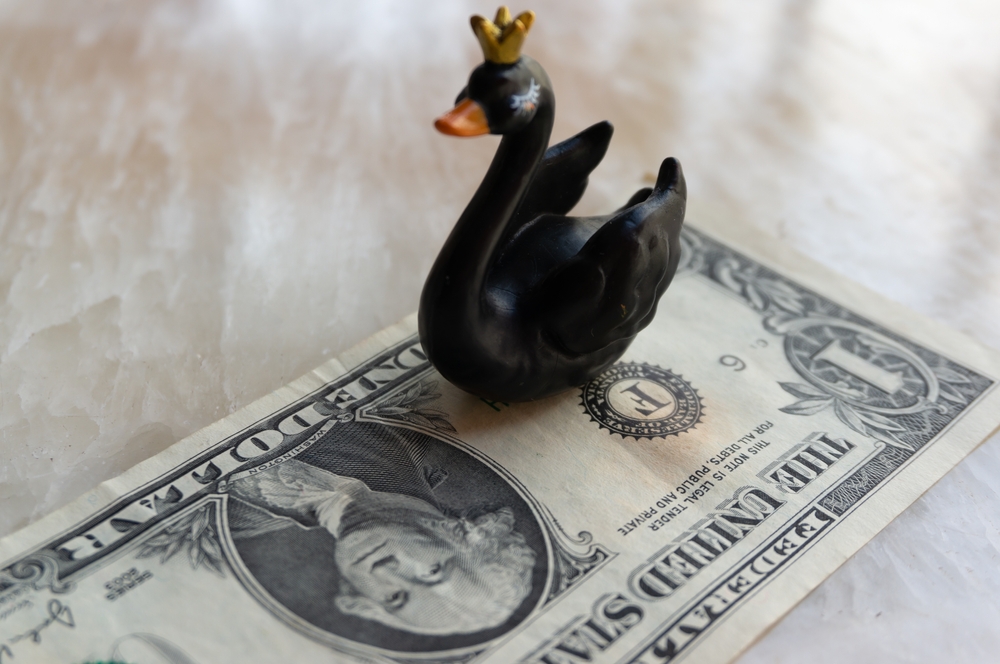Warning: This Powerful Trading Strategy Is Not for Newbies
One trading strategy I love to use – both in my personal trading and in Daily Profits Live – is called the “Butterfly Trade.”
Some of my best Butterfly Trades this year have handed me top gains of 219.38% on Nvidia (NVDA) in seven days, 113.38% on MicroStrategy (MSTR) in 22 days and 107.32% on ServiceNow (NOW) in two days.
But I must be clear on one thing…
This trading strategy is NOT for beginners. It involves a complex setup that could easily confuse and overwhelm those who haven’t traded options before.
Once you understand the nuances of it, though, you’ll find it has several big-time benefits… one of which is the ability to profit from minor price movements while also limiting downside risk.
I’m going to lay out exactly how to execute a Butterfly Trade in just a moment.
But before I do that, it’s important to understand the big picture of how Butterfly Trades work.
Butterfly Trades 101
A Butterfly Trade is a multifaceted trade that involves four options contracts with the same expiration date.
Think of a Butterfly Trade like a tightrope walk. The goal is to balance on a “narrow rope” and make a profit by accurately predicting where an asset’s price is headed next.
There are two types of Butterfly Trades: “at the money” (ATM) and “out of the money” (OTM).
With an ATM Butterfly Trade, you are betting on the underlying asset staying at or near its current price. This would be a type of premium-collection strategy.
With an OTM Butterfly Trade, you are betting on the underlying asset moving to a specific price. There’s more movement in this type of Butterfly Trade, and the risk-reward ratio is much higher.
Now let’s take a look at how to actually structure a Butterfly Trade.
What a Butterfly Trade Can Look Like
As you’ll see below, Butterfly Trades are made up of three parts: a body, a “lower wing” and a “higher wing.” The two wings are your counterweights, helping you stay steady. If the price of the underlying asset deviates too much from your target price, you might lose your balance, leading to a smaller profit or a loss.
Here are the three components of a Butterfly Trade:
#1: Sell two calls whose strike price is your target price for the stock. These are the “body” of the butterfly. If you think the stock’s price is not going to move much, they will be two ATM options. If you think the stock is going to move up, they will be two OTM options, because their strike price will be the price you’re expecting the stock to reach.
#2: Buy a call with a lower strike price. This is the “lower wing” of the butterfly. This call will have a strike price that’s lower than your target price for the stock. If you’re selling two ATM calls (i.e., you think the stock’s price isn’t going to move much), this call will be in the money, or ITM. If you’re selling two OTM calls (i.e., you think the stock’s price will move up), this call will either be ATM or only slightly OTM.
#3: Buy a call with a higher strike price. This is the “higher wing” of the butterfly. This call will have a strike price that’s higher than your target price for the stock. If you’re selling two ATM calls (i.e., you think the stock’s price isn’t going to move much), this call will be OTM. If you’re selling two OTM calls (i.e., you think the stock’s price will move up), this call will be even further OTM.
Now, here’s how this trade works when it’s put into action.
The Butterfly Effect
The two options you sold (the body) will help offset the cost of the two options you bought (the wings), making the trade less expensive. You will achieve your maximum profit if the underlying asset’s price ends up at the strike price of the options you sold (which was your expected price for the asset). That would mean you correctly predicted where the asset’s price would go.
If the price deviates from that level, the trade could result in a smaller profit or a loss.
The primary benefits of a Butterfly Trade are as follows:
– Limited risk: Butterfly Trades are structured to have a predefined and limited amount of risk. By selling two options, you can offset some of the cost of purchasing the other two options. That means your potential loss is capped, because the most you can lose is the initial cost of setting up the trade.
– Profits from low volatility: Many options strategies rely heavily on volatility – when a significant amount of money isn’t flowing into or out of a stock, options on the stock often expire worthless. But with ATM Butterfly Trades, you have an opportunity to make money from limited movement and limited volatility.
– Potential for high risk-reward ratio: In ideal conditions, Butterfly Trades can offer a favorable risk-reward ratio. The maximum profit can be significantly higher than the initial risk. Especially with OTM Butterfly Trades, the risk-reward ratio can be absolutely incredible!
– Customizability: Butterfly Trades are highly customizable. Traders can adjust the strike prices and expiration dates of the options to match their specific market outlook and risk tolerance.
And don’t just take it from me. Look at what Daily Profits Live members have posted about Butterfly Trades!
- “With the BTC move, exited the DPL MSTR July butterfly, 1/3 of the position for a 100% profit [in 22 trading days]!” – SpacemanSnoopy
- “I did Butterfly trade with Nates guidance on SPY. Opened as put sell $1.70 credit, Closed at $1.63 net debit–in other words +$718.00 in my pocket [in two trading days]” – Sneha
- “DPL Butterfly trade NOW 07/21 in $1.85 out $4.10 [for a 121% gain in two trading days]. Thank you Nate B!” – Bill G52
- “SPY just closed a DPL Butterfly for 128% gain in 2 days” – THOM I
![]()
YOUR ACTION PLAN
The Butterfly Trade is a strategy I use frequently in my live trading service, Daily Profits Live. And as part of a special “Open House” event next week, I’m going to be opening the doors to everybody ALL WEEK… absolutely free. My members pay thousands of dollars each year to trade alongside me… but you’re going to get the same amount of access for FREE for one whole week. There’s no credit card required. You’ll have to hurry though – this offer ends on Sunday.
Go here to get on the guest list for free today.
FUN FACT FRIDAY
Gravity Is Simple; Humans, Not So Much. Sir Isaac Newton famously exclaimed about the direction of stocks “I can calculate the motions of the heavenly bodies, but not the madness of the people.” Luckily, that’s what we do for you inside The War Room. You’re welcome, Sir Isaac!
More from Trade of the Day
My Go-To Plays for Safety + Long-term Profits
Apr 26, 2024
My Favorite Way to Hedge Choppy Markets
Apr 25, 2024
The Story Behind My 10 Bagger on RILY
Apr 25, 2024
A Silver Lining From Last Week’s Underperformance
Apr 24, 2024

























